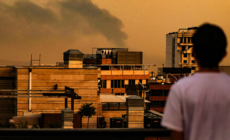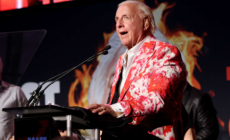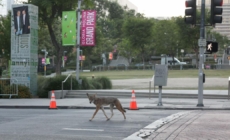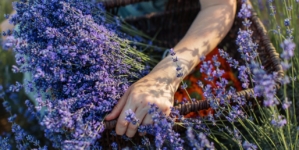-
Is Caitlin Clark already one of sports’ biggest stars? | The Herd - 5 mins ago
-
Texas man allegedly struck his mom in the head with a hammer and confessed to a friend - 12 mins ago
-
Cher’s son Elijah Allman hospitalized after erratic behavior - 22 mins ago
-
Venetians protest Bezos and Sánchez wedding as mayor welcomes event - 27 mins ago
-
How Israel’s Iran strikes might supercharge the global nuclear arms race - 31 mins ago
-
Wrestling Legend Ric Flair Forced To Cancel Appearance Amid Cancer Battle - 33 mins ago
-
Kyle Kirkwood on winning Bommarito Automotive Group 500, winning on street courses | INDYCAR on FOX - 48 mins ago
-
‘It reminded me of COVID’: Mayor Bass decries economic impact of immigration raids on L.A. - about 1 hour ago
-
Helen Hunt sports vibrant bikini at 62 after rejecting Hollywood’s standards - about 1 hour ago
-
Dodgers’ Shohei Ohtani Pitching Return: Everything to Know - about 1 hour ago
California leaders say sweeping DOGE cuts will make wildfires worse
HOPLAND, Calif. — On a sun-kissed hillside in remote Northern California, I watched in awe as a crackling fire I’d helped ignite engulfed a hillside covered in tall, golden grass. Then the wind shifted slightly, and the dense gray smoke that had been billowing harmlessly up the slope turned and engulfed me.
Within seconds, I was blind and coughing. The most intense heat I’d ever felt seemed like it would sear the only exposed skin on my body: my face. As the flames inched closer, to within a few feet, I backed up until I was trapped against a tall fence with nowhere left to go.
Alone in that situation, I would have panicked. But I was with Len Nielson, chief of prescribed burns for the California Department of Forestry and Fire Protection, who stayed as cool as the other side of the pillow.
Like a pilot calmly instructing passengers to fasten their seat belts, Nielson suggested I wrap the fire-resistant “shroud” hanging from my bright yellow helmet around my face. Then he told me to take a few steps to the left.
And, just like that, we were out of the choking smoke and into the gentle morning sunlight. The temperature seemed to have dropped a few hundred degrees.
“It became uncomfortable, but it was tolerable, right?” Nielson asked with a reassuring grin. “Prescribed fires are a lot about trust.”
Dripping gasoline onto dry grass and deliberately setting it ablaze in the California countryside felt wildly reckless, especially for someone whose job involves interviewing survivors of the state’s all too frequent, catastrophic wildfires. But “good fire,” as Nielson called it, is essential for reducing the fuel available for bad fire, the kind that makes the headlines. The principle is as ancient as it is simple.
Before European settlers arrived in California and insisted on suppressing fire at every turn, the landscape burned regularly. Sometimes lightning ignited the flames; sometimes it was Indigenous people using fire as an obvious, and remarkably effective, tool to clear unwanted vegetation from their fields. Whatever the cause, it was common for much of the land in California to burn about once a decade.
“So it was relatively calm,” Nielson said, as the flames we’d set danced and swirled just a few feet behind him. “There wasn’t this big fuel load, so there wasn’t a chance of it becoming really intense.”
With that in mind, the state set an ambitious goal in the early 2020s to deliberately burn at least 400,000 acres of wilderness each year. The majority of that would have to be managed by the federal government, since agencies including the U.S. Forest Service, the Bureau of Land Management and the National Park Service own nearly half of the state’s total land. And they own more than half of the state’s forests.
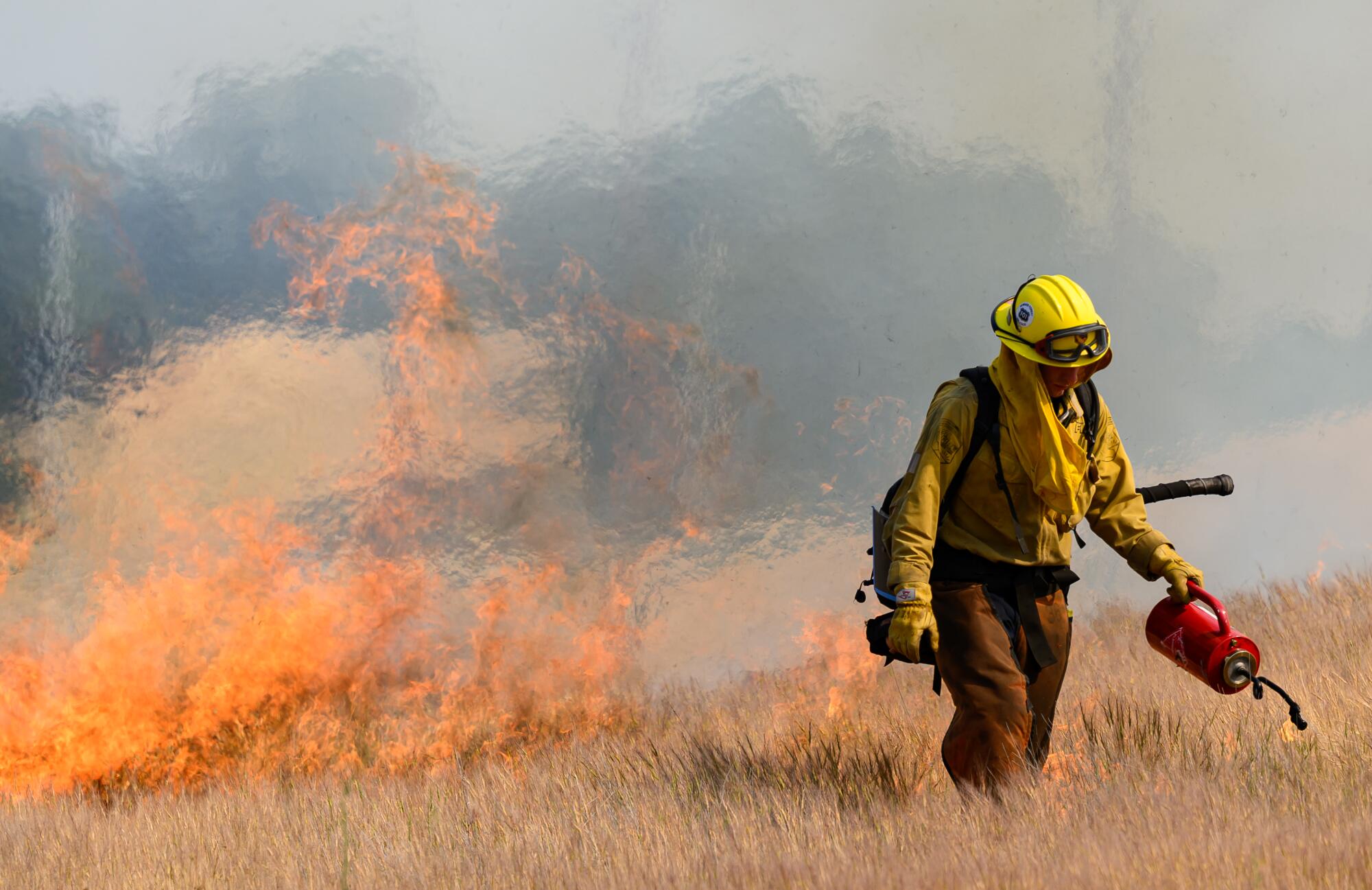
Cal Fire crew members set a prescribed burn near Hopland in Mendocino County.
(Josh Edelson / For The Times)
But California officials worry their ambitious goals are likely to be thwarted by deep cuts to those federal agencies by Elon Musk’s budget-whacking White House advisory team, dubbed the Department of Government Efficiency, or DOGE. In recent months, the Forest Service has lost about 10% of its workforce to mass layoffs and firings. While firefighters were exempt from the DOGE-ordered staffing cuts, employees who handle the logistics and clear the myriad regulatory hurdles to secure permission for prescribed burns were not.
“To me, it’s an objective fact that these cuts mean California will be less safe from wildfire,” said Wade Crowfoot, California’s secretary of natural resources. He recalled how President Trump, in his first term, erroneously blamed the state’s wildfires on state officials who, Trump said, had failed to adequately “rake” the forests.
“Fifty-seven percent of our forests are owned and managed by the federal government,” Crowfoot said. If anybody failed, it was the president, he argued.
Larry Moore, a spokesman for the U.S. Department of Agriculture, which oversees the Forest Service, said the job cuts won’t affect the agency’s fire prevention efforts.
The Forest Service “continues to ensure it has the strongest and most prepared wildland firefighting force in the world,” Moore wrote in an email. The agency’s leaders are “committed to preserving essential safety positions and will ensure that critical services remain uninterrupted.”
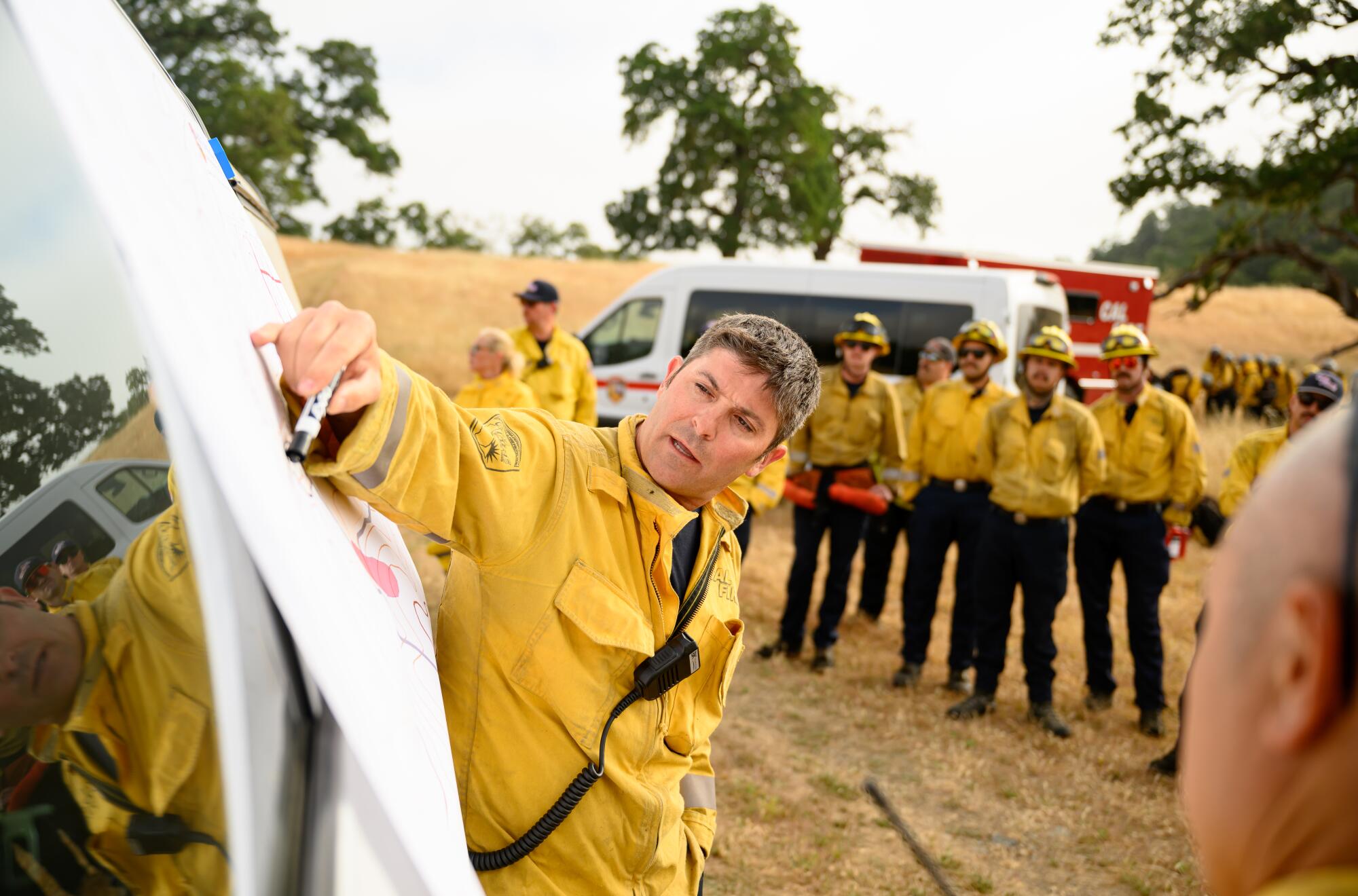
Cal Fire crew members plot out the direction and scope of a prescribed burn in Mendocino County.
(Josh Edelson / For The Times)
Nevertheless, last month, Gov. Gavin Newsom added $72 million to the state’s forest management budget to bridge some of the gap expected to be left by federal agencies. But wildfire experts say that’s just a drop in the bucket. Doing prescribed burns safely takes a lot of boots on the ground and behind-the-scenes cajoling to make sure local residents, and regulators, are on board.
Because people get pretty testy when you accidentally smoke out an elementary school or old folks home, burn plans have to clear substantial hurdles presented by the California Environmental Quality Act and air quality regulators.
It took three years to get all the required permissions for the 50-acre Hopland burn in Mendocino County, where vineyard owners worried their world-class grapes might get a little too “smoky” for most wine lovers. When the big day finally arrived in early June, more than 60 firefighters showed up with multiple fire engines, at least one bulldozer and a firefighting helicopter on standby in case anything went wrong.
They gathered at the University of California’s Hopland Research and Extension Center, where students learn about ranching and wilderness ecology.
But this was no school project. A fire that began in the surrounding hills a couple of years ago threatened to trap people in the center, so the area being burned was along the only two roads that could be used to escape.
“We’re trying to create a buffer to get out, if we need to,” said John Bailey, the center’s director. “But we’re also trying to create a buffer to prevent wildfire from coming into the center.”
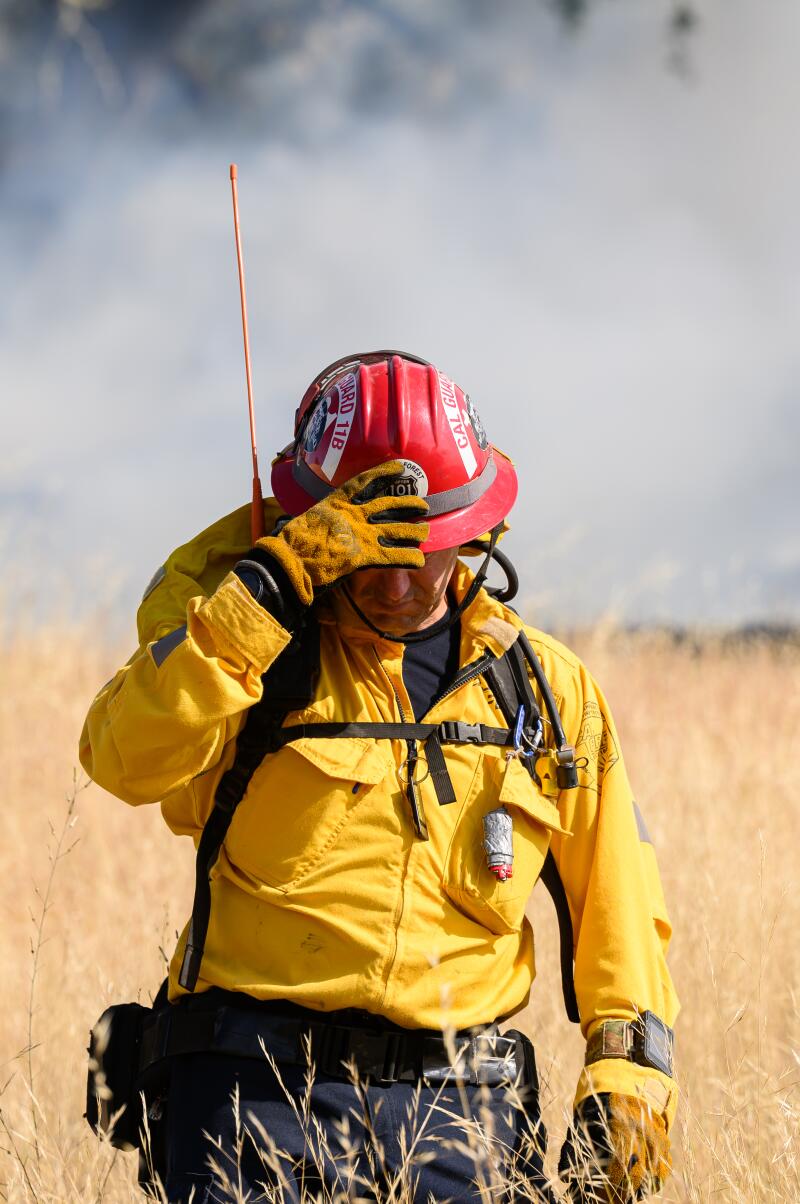

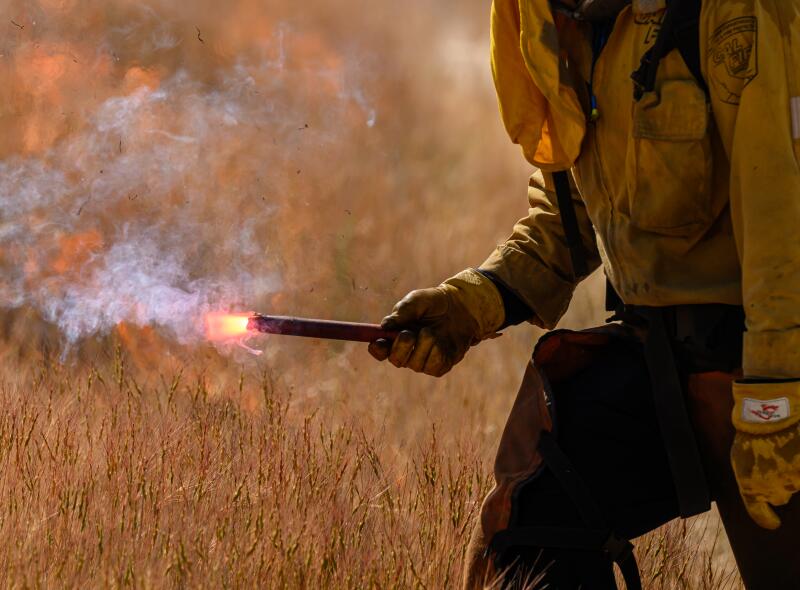
Smoke emanates from a prescribed burn in Mendocino County. (Josh Edelson / For The Times)
As the firefighters pulled on their protective yellow jackets and pants, and filled their drip torches with a mixture of diesel and gasoline, Nielson bent down and grabbed a fistful of the yellow grass. Running it through his fingers, he showed it to his deputies and they all shook their heads in disappointment — too moist.
Thick marine-layer clouds filled the sky at 7 a.m, keeping the relative humidity too high for a good scorching. In many years of covering wildfires, it was the first time I had seen firefighters looking bored and disappointed because nothing would burn.
By 8:45 a.m., the clouds cleared, the sun came out, and the grass in Nielson’s fist began to crinkle and snap. It was time to go to work.
The fire that would fill the sky and drift north that afternoon, blanketing the town of Ukiah with the familiar orange haze of fire season, began with a single firefighter walking along the edge of a cleared dirt path. As he moved, he made little dots of flame with his drip torch, drawing a line like a kid working the edges of a picture in a coloring book.
Additional firefighters worked the other edges of the field until it was encircled by strips of burned black grass. That way, no matter which direction the fire went when they set the center of the field alight, the flames would not — in most circumstances — escape the relatively small test patch.
On the uphill edge of the patch, along the top of a ridge, firefighters in full protective gear leaned against a wooden fence with their backs to the smoke and flames climbing the hill behind them. They’d all done this before, and they trusted those black strips of pre-burned grass to stop the fire before it got to them.
Their job was to keep their eyes on the downward slope on the other side of the ridge, which wasn’t supposed to burn. If they saw any embers drift past them into the “green” zone, they would immediately move to extinguish those flames.
Nielson and I were standing along the fence, too. In addition to the circle of pre-burned grass protecting us, we were on a dirt path about four feet wide. For someone with experience, that was an enormous buffer. I was the only one who even flinched when the smoke and flames came our way.
Afterward, when I confessed how panicked I had felt, Nielson said it happens to a lot of people the first time they are engulfed in smoke. It’s particularly dangerous in grass fires, because they move so fast. People can get completely disoriented, run the wrong way and “get cooked,” he said.

Grass fires are particularly dangerous, because they move so fast, says Cal Fire Staff Chief Len Nielson. People can get disoriented in the smoke, run the wrong way and “get cooked.”
(Josh Edelson / For The Times)
But that test patch was just the warmup act. Nielson and his crew were checking to make sure the fire would behave the way they expected — pushed in the right direction by the gentle breeze and following the slope uphill.
“If you’re wondering where fire will go and how fast it will move, think of water,” he said. Water barely moves on flat ground, but it picks up speed when it goes downhill. If it gets into a steep section, where the walls close in like a funnel, it becomes a waterfall.
“Fire does the same thing, but it’s a gas, so it goes the opposite direction,” Nielson said.
With that and a few other pointers — we watched as three guys drew a line of fire around the base of a big, beautiful oak tree in the middle of the hillside to shield it from what was about to happen — Nielson led me to the bottom of the hill and handed me a drip torch.
Once everybody was in position, and all of the safety measures had been put in place, he wanted me to help set the “head fire,” a 6-foot wall of flame that would roar up the hill and consume dozens of acres in a matter of minutes.
“It’s gonna get a little warm right here,” Nielson said, “but it’s gonna get warm for only a second.”
As I leaned in with the torch and set the grass ablaze, the heat was overwhelming. While everyone else working the fire seemed nonchalant, I was tentative and terrified. My right hand stretched forward to make the dots and dashes where Nielson instructed, but my butt was sticking as far back into the road as it could get.
I asked Nielson how hot he thought the flames in front of us were. “I used to know that,” he said with a shrug. “I want to say it’s probably between 800 and 1,200 degrees.”
With the hillside still burning, I peeled off all of the protective gear, hopped in a car and followed the smoke north along the 101 Freeway. By lunchtime, Ukiah, a town of 16,000 that bills itself as the gateway to the redwoods, was shrouded in haze.
Everybody smelled the smoke, but prescribed burns are becoming so common in the region, nobody seemed alarmed.
“Do it!” said Judy Hyler, as she and two friends walked out of Stan’s Maple Cafe. A veteran of the rampant destruction of wildfires from years past, she didn’t hesitate when asked how she felt about the effort. “I would rather it be prescribed, controlled and managed than what we’ve seen before.”
Source link




